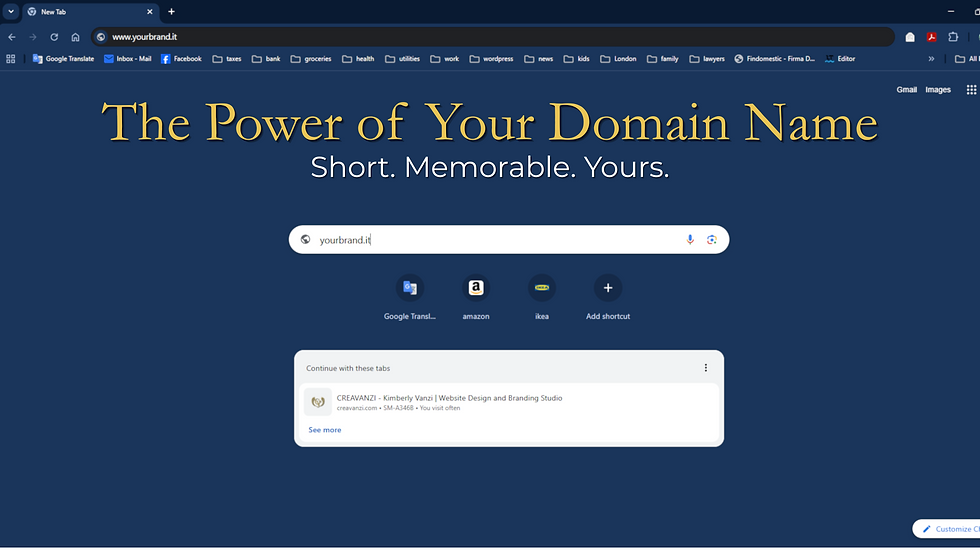How to Check Who Owns Your Domain
- Sep 24
- 3 min read
Updated: Sep 26

When it comes to your website, ownership matters. Too often, business owners discover that their domain — the very name of their brand online — is actually registered under someone else, like an agency or third party. This puts your business at risk and limits your ability to manage it effectively.
In this article, I’ll guide you through a straightforward step-by-step process to verify who owns your domain and ensure it’s truly in your control.
Tip: If your domain isn’t in your name, you could lose control of your online identity overnight.
Step 1: Use a WHOIS Lookup Tool for Domains
The first step to checking domain ownership is a simple search. A WHOIS lookup reveals the registration details for your domain, including the owner, manager, and expiration date.
Look for fields like Registrant Name or Registrant Organization.
If you see your name or business, you’re the owner.
If you see your agency’s name, they could be holding control.
Tip: If you’re unsure how to read the results, scan for 'Registrant' or 'Organization'; that’s usually where ownership is listed.
Step 2: Understand Privacy Protection
Sometimes, a WHOIS search doesn’t display personal details because privacy protection is enabled. This is common and legal — it keeps personal info safe from spammers.
If details are hidden, you’ll see “Redacted for Privacy” or the name of a privacy service.
This doesn’t mean you don’t own the domain, but it's best to confirm with your registrar or agency.
A promising sign is receiving emails from your registrar asking you to confirm contact and privacy details.
Tip: If those emails are coming directly to your inbox, it’s a strong sign the domain is tied to you.
Step 3: Check Your Login Access
Your domain should always be tied to an account that you can log into. This is where renewals are billed and managed.
You should have a username and password in your name or the name of your business.
Sometimes your website and domain are together (like Wix Studio or WordPress).
Sometimes they’re separate (e.g., your site is hosted on WordPress, but your domain is registered with Aruba or GoDaddy).
Tip: Platforms like Wix Studio make this easier by keeping your site, hosting, and domain in one place, eliminating missed renewals or confusion.

Step 4: Ask Your Agency Directly
If you’re unsure or don’t see your details, ask your agency or freelancer directly. Transparency is key.
Ask: “Can you confirm the domain is registered in my name?”
Ask: “Can I have access to the account where it’s registered?”
Ask: “Can you transfer billing and renewal emails to me?”
Tip: Always obtain their response in writing (such as an email). That way, if there’s ever a dispute, you have proof.
Step 5: Take Control if Needed
If you discover your domain isn’t in your name, request a transfer. Ownership should always sit with you, not an agency.
Request transfers so renewals are in your control.
Move providers if you want, without losing your domain.
Secure your brand for the long term.
Tip: Keep a record of your domain details, including account login information, registrar details, and renewal dates. Stored in a secure location. This simple habit protects your business identity.

Take Ownership Today
Your domain is one of your most valuable business assets. Don’t risk leaving it in someone else’s hands. A simple check today can save you from bigger problems tomorrow, from missed renewals to lost access or even losing part of your brand identity.
Quick Reminders:
Use a WHOIS lookup to confirm who’s listed as the registrant.
In the EU, privacy protection is normal. It hides your details in WHOIS, but you still retain ownership of your domain.
Always keep login and billing access in your own name.
Before you move on, ask yourself this…







Comments